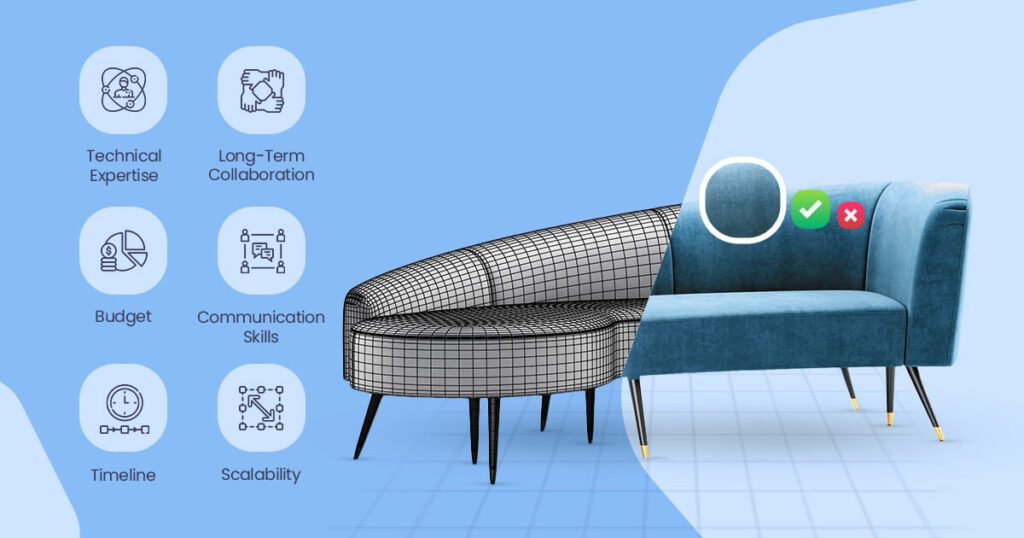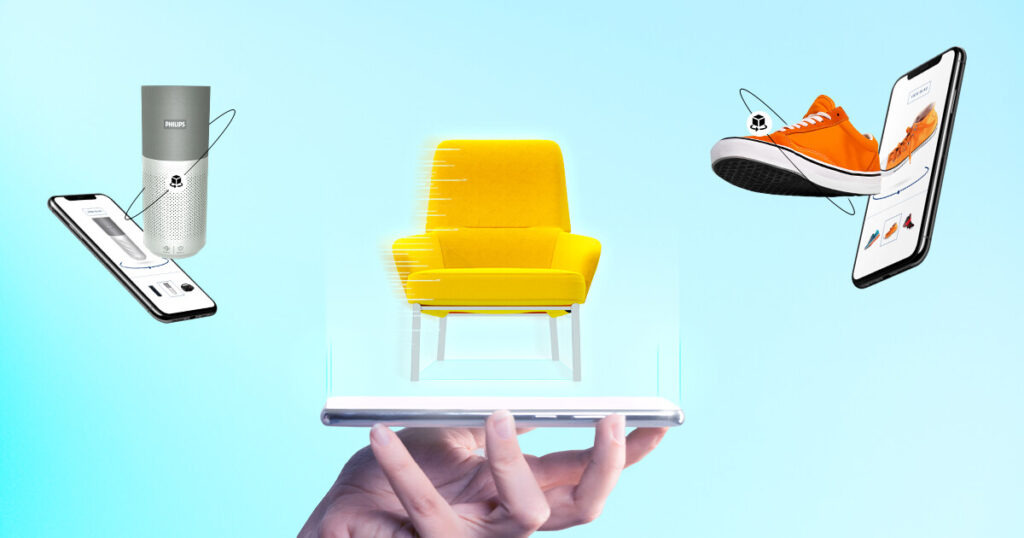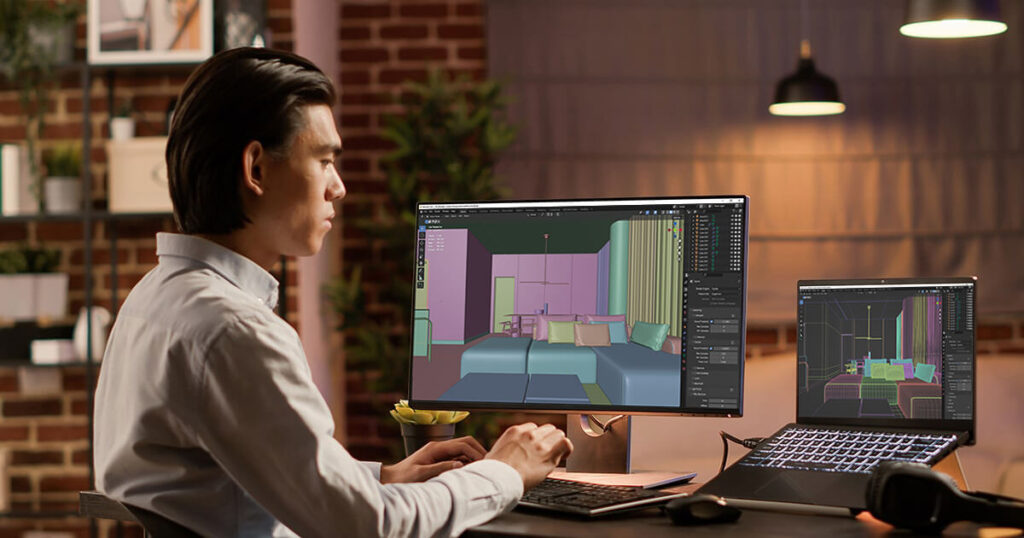Images are important in design furniture online in the present digital epoch, as more and more purchasers rely on online channels for their buying requirements. It is not possible to overstate the impact of visual depiction. This is particularly true in the furniture sector, where customers frequently decide to make large purchases based on how a piece feels and looks in their home. Good product photography is now a need rather than an extravagance.
Regrettably, the real character of furniture is frequently not captured by typical photography. A slice’s look might be distorted by variables with lighting, angles, and product placement, which can result in sad customers and returns. Besides, customers’ capacity to completely picture how an item might fit into their home is limited by pictures’ fixed quality.
The use of 3D rendering technologies has had a profound impact on the furniture industry. Utilizing specialized 3D software, this novel approach generates very lifelike digital representations of furniture fragments. Designers are able to create photographs that are almost similar to real-life photos by adjusting the light, texture, and material attributes.
Because 3D rendering offers so many benefits, the furniture business has embraced technology swiftly. Unlike traditional photography, 3D renders offer unparalleled control over the finished product. Without actual prototypes, designers can test out various lighting setups, angles, and even material finishes. This adaptability lowers expenses and speeds up the design process.
This blog post pursues the dramatic effects of 3D rendering on the furniture design online scene. We’ll look at how this technology changes how people view products, grows sales, and transforms how people interact with furniture. You’ll see why furniture companies trying to succeed in the digital epoch need to use 3D rendering as a necessary tool rather than merely a fad.

The Role of 3D Rendering in Design Furniture Online
Definition and Explanation of 3D Rendering in design furniture online
Realistic photos or animations of three-dimensional objects are produced digitally through a process called 3D rendering. Making a virtual model of a piece of furniture using specialized software and then producing incredibly detailed photographs from various angles is the method of furniture design. With the use of this technology, furniture product designers and marketers may envision and present their work in a controlled, customizable setting.
How 3D Rendering Enhances Product Visualization in design furniture online
There are various benefits that come with using 3D rendering for product visualization:
- Detailed Product Showcase: Furniture with complicated textures, features, and finishes that may be challenging to photograph properly in standard photography can be highlighted with 3D models.
- Customization Options: Without actually making the products, designers can test with different finishes, colors, and materials to produce diverse iterations of a design.
- Interactive Experiences: The client may spin, zoom, and experiment with furniture from any angle by centering 3D models on interactive online platforms.
- Accurate Scale and Proportion: With the help of precise measurements and dimensions provided by 3D models, customers can see how a slice will fit in their available area.
Comparison of Traditional Photography vs. 3D Rendering
While traditional photography has its place, 3D rendering provides the following advantages:
- Control: Complete control over background, lighting, and angles is possible with 3D rendering, guaranteeing consistent, excellent photographs.
- Cost-Efficiency: When compared to traditional photography, 3D rendering offers substantially faster and less expensive ways to create several product variations or make edits to an image.
- Speed: Rapid generation of 3D renders shortens the time it takes for new items to reach the market.
- Versatility: E-commerce platforms, product catalogues, and marketing materials are just a few uses for 3D models.

3D Rendering’s Advantages for Design Furniture Online
Enhanced Flexibility and Creativity in Design
Free from the limitations of physical prototype, 3D rendering allows furniture designers to explore an enormous range of design options. To make original and cutting-edge works, designers can play around with various forms, sizes, materials, and finishes. Because of its adaptability, design concepts may be quickly iterated upon, stimulating innovation.
The Economy of Displaying Various Designs
Photography and tangible prototypes are two costly and time-consuming ways to display furniture ideas. 3D rendering offers an additional reasonably priced choice. A greater variety of options can be offered to clients and manufacturing costs can be decreased by designers because to their ability to digitally produce various design variations.
Capacity to Provide Consumers with Customizable and Realistic Options
Designers can give interactive 3D models to clients so they can have a personalized purchasing experience. Customers are capable of experimenting with various colors, materials, and finishes to see how diverse furniture slices would seem in their homes. When customers are provided with this level of personalization, they are happier and more inclined to make a purchase.
Consumer Experience and Engagement in Design Furniture Online
How Enhancing User Experience with 3D Rendering on E-Commerce Platforms
User commitment on the e-commerce stage is revolutionized by 3D rendering, which offers immersive and engrossing purchase expertise. Client can zoom, spin, and examine furniture pieces from every perspective to fully grasp the design and features of the product. Customers may create a genuinely customized buying experience by customizing furniture with a variety of colors, materials, and finishes on numerous platforms. Customers can see how furniture might look in their own houses by placing 3D models in virtual room settings. With the use of their smartphone or tablet, users of certain platforms with augmented reality capabilities can visually arrange furniture in their physical spaces.
The Effect of Lifelike Visuals on Consumer Decision-Making
High-quality 3D renders significantly impact consumer decision-making by:
Reducing Purchase Anxiety Customers can make more confident purchases when they see realistic photographs because there is less chance that they will receive a product that falls short of their expectations.
Enhancing Product Perception Furniture’s perceived worth is raised when fine details and craftsmanship are displayed in detailed 3D representations.
Driving Impulse Purchases Impulsive purchases may result from immersive graphics that pique a consumer’s interest in a product.
Case Studies or Examples of Successful Design Furniture Online Utilizing 3D Rendering
A number of internet-based furniture retailers have effectively used three-dimensional rendering to improve customer satisfaction and increase revenue.
- IKEA- Known for its creative way of buying furniture, IKEA has invested heavily in 3D technology so that customers may use augmented reality to see products in their homes.
- Interior Define- This customizable furniture company uses 3D rendering to present a wide range of choices, enabling clients to develop personalized designs.
- Casper- Casper is a mattress company first and foremost, but it has also included 3D representations of different bedroom setups to enhance the purchasing experience and motivate customers.
By using compelling case studies and examples, you can illustrate how 3D rendering has impacted the furniture sector in the real world.
Conclusion
In the digital epoch, 3D rendering has become a vital instrument for furniture designers and sellers. Through the provision of new product visualization, customization options, and interactive experiences, 3D rendering improves sales, builds brand acceptance, and boosts client tendencies. Its capacity to unify digital and actual environments has totally changed how furniture is displayed and purchased.
In the future of 3D rendering, the furniture area has a lot of potential. Artificial talent and virtual reality are two instances of how technology is about to change the furniture industry and the way furniture is marketed and used. A seamless combination of virtual and augmented reality in the shopping experience, more lifelike and immersive 3D models, and AI-powered design tools are all to be expected.
Furniture manufacturers who don’t use 3D rendering run the danger of falling behind in today’s competitive landscape. Retailers and designers can greatly benefit from this technology by investing in it since it will improve consumer satisfaction, improve product presentation, and eventually increase sales. Pioneers in the field will have a distinct advantage in seizing new prospects and staying ahead of the curve as 3D rendering keeps developing.
Have any project, please contact us






